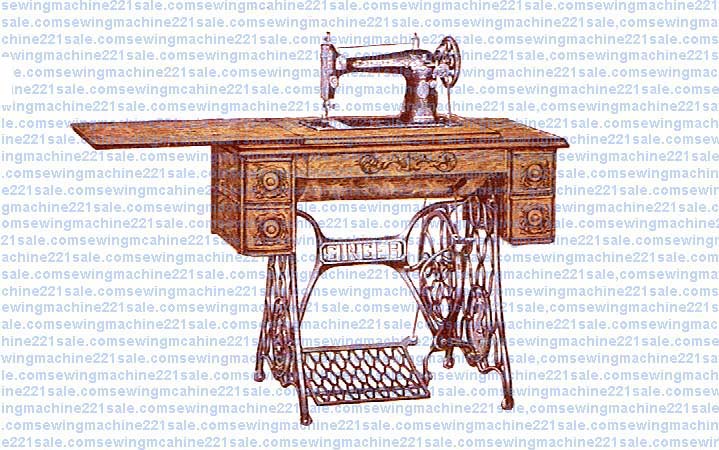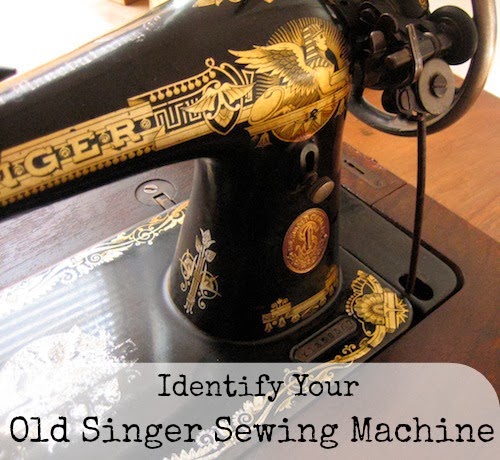Antique Sewing Machines are Not a Thing of the Past
Made in U.S.A. Quality and Craftsmanship. Antique SINGER Sewing Machine. Treadle foot pedal powered. All Original. Over 105 Years Old. Condition as shown. Sorry - this item is no. Hi, I have inherited this vintage singer sewing machine from my grandmother and I am looking to get some information of the value, history and how to find the right buyer for such items. What I have learned thus far is that it is a Model 27, made on January 27th, 1900 in New Jersey.
The Mechanics of it All
There are a few different types of antique machines that are differentiated from back when they were widely used. Singer was the most popular brand of sewing machine. They originated in 1851, with a domestic sewing machine. These are also considered mechanical in nature due to the moving parts and age of everything. They also go by the name of a treadle machine. Table-based Sing sewing machines are typically treadle in design which means they are operated with a foot pedal. While these were easy to control your speed and manueverability with your garments, due to the age of these machines, many of the foot pedals were often lost and are hard to find. Popularized by Singer and although widely distributed, the treadle sewing machine is large and takes up more space. It typically stays in one location and is hard to move.
To Stand or Not to Stand
There are two subset categories for mechanical sewing machines: stand based or table based. Stand based machines are simply the sewing machine itself and can easily be transported to wherever you need to do your sewing. Table based machines are built into a table stand that creates a sewing center with more tabletop space for your work and gear.
Features of an Old Machine
The antique versions of either of these machines are simple in design and features and can be easily repaired. Common features include a presser foot, bottom loading bobbin, adjustable tension, adjustable stitch length and single stitch. Treadle and hand operated machines usually only have one straight and forward built-in stitch capability. It typically stays in one location and is hard to move. Antique machines are certainly a thing of the past but their function and design still are just as good in a crafting world in which technology has taken over.
Make the Most of Your Model
By answering some simple questions, you can determine what model of sewing machine you are looking for and may already have.
- What model do you need?
- What technology is used?
- Is it easy to repair?
Treadle Sewing Machine

Per the model that you are interested in, there are specific parts and accessories that are used strictly with those machines. While some models certainly shared parts, there were newer sewing machines that had differently adapted technology that would not be compatible with older models. If you have a Brother or Singer from a specific time period, there may be some relatively common pieces that transcend most makes of machinery. However, you generally cannot use a differently manufactured part for another brand of sewing machine.
Find and Seek
The parts of your antique sewing machine may prove to be a challenge in obtaining. However, antiquities dealers that specialize in sewing machines, would be able to fully help in finding what items you need. It is important to note that while you may have found the parts and accessories you need for your sewing machine, that due to the age, some pieces may need professional cleaning and detailing, or could even be rusted. If refurbishing an antique sewing machine, having clean parts on-hand for any impromptu fixes is key.
In 1850 Isaac M. Singer envisioned the treadle, a cast-iron, foot-powered pedal, as a convenient, marketable device to power sewing machines. Although he did not invent the treadle or patent it, his New Family Model 12 (1865-1902) made the treadle machine affordable for approximately two million customers, according to International Sewing Machine Collectors' Society (ISMACS). This antique treadle model, just one among many, offered more manual freedom and greater control of fabric than previous hand-cranked models. To identify antique treadle machines, note design features, serial numbers and trademarks.
Recognize the basic components of an antique treadle machine, including the entire cast-iron treadle mount supporting the table top. Also note the foot pedal attached to a treadle rod and the treadle belt made of leather. A treadle machine has no electronic connection or plastic parts.

Examine distinctive design features. For example, a Kimball & Morton treadle, first manufactured in 1868, had an eagle and lion design on the treadle end casting, accompanied by the words “Strength and Speed.' The Singer name often appeared in cast iron above the treadle. Sometimes treadles hid within ornate parlor cabinets, designed more for show and status than hard work.
Locate a serial number on your machine to identify its age. Collectors, such as Berzack, collect antique treadles through the 1940s but focus on those produced before 1900. Some manufacturers, such as Singer, have extensive records about their serial numbers after 1870. The White Sewing Machine Company, a major rival to Singer after 1926, has less extensive records. Numerous sites, such as ISMACS, Singer or White can help with the identification of your antique treadle machine.

Search for a trademark on your pre-1950 treadle sewing machine but acknowledge its limitations. Years ago, distributors acquiring at least 100 machines would “badge” them with their own trademark or name, disguising the original manufacturer, including foreign imports. Sears placed its brand name on many machines, including the popular Franklin Rotary that the White Sewing Machine Company produced. In contrast, the Singer Sewing Company never put another distributor’s name on its products, according to Berzack’s interview in Collectors Weekly.
Differentiate among early Singer imitations when identifying your antique treadle machine. In 1894, the Goodrich Sewing Machine Company called one of its treadle machines the “Improved Singer.” Manufacturers even copied the “S” emblem from Singer. Many companies that sold their machines in the Sears Roebuck catalog copied early 1900 Singer models. For example, the Davis company imitated Singer’s attractive Memphis decals with an Egyptian equivalent. After using the Davis models, Sears switched to Domestic, a company that also replicated Singer designs.
Singer Treadle Sewing Machine Value
Use the information you have gathered to assess the value of your machine or to find needed parts. The ISMACS website can provide you with comprehensive information about collections through its numerous links.
Tip
Buy Singer Treadle Sewing Machine
Rarity, rather than the age of an antique treadle machine, can reflect its value; a style produced in mass quantity may lack significant value.
Singer Treadle Sewing Machine Tables
Treadle machines have gained popularity with quilters who enjoy their control; others praise treadles as a way to burn calories as they sew.
Singer Treadle Sewing Machine Serial Numb…
Toy treadle machines, also made of cast iron, have become popular collector items.